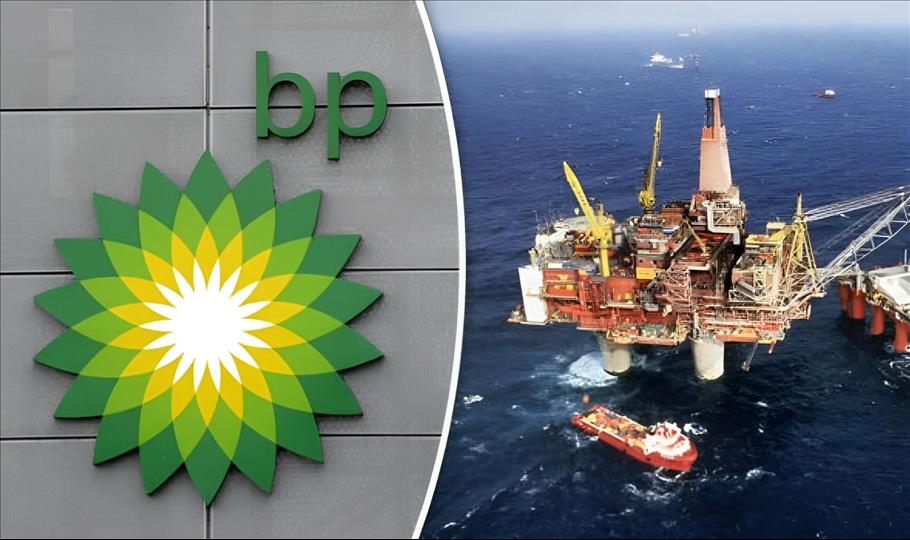
Azerbaijan's Energy Agenda Expands From Hydrocarbons To Renewables In Bp's Latest Results
Energy in Azerbaijan has always been more than numbers on a balance sheet, it is the lifeblood of the nation's economy, the foundation of its independence, and increasingly, a reflection of its future. True to tradition, showcasing the country's oil production indicators remains essential, as they continue to define both economic performance and national resilience. bp's third-quarter results for 2025 mark another period of stability in Azerbaijan's energy output, now coupled with a visible shift toward cleaner technologies.
With new investments in electrification and solar generation, Azerbaijan's long-standing partnership with bp is evolving, focusing not only on production but also on efficiency, emissions, and long-term sustainability.
In the first nine months of 2025, ACG's production averaged around 327,000 barrels per day, maintaining a stable output profile. The milestone coincided with the 20th anniversary of oil production from the Central Azeri platform, which has produced 1.2 billion barrels to date.
At the same time, associated gas deliveries to the Azerbaijani state averaged 8 million cubic metres per day, underscoring bp's continued role in supporting the country's domestic energy needs.
Drilling activity also remained robust, with six oil producers, four water injectors, and one gas injector well completed during the period. Following the signing of the ACG Non-Associated Gas Addendum, bp successfully drilled its first gas production well at West Chirag, paving the way for the first NAG production in early 2026, a milestone that broadens ACG's scope beyond oil.
The Shah Deniz field continued to provide gas to Azerbaijan, Georgia, Türkiye, and European buyers, producing 21 billion m3 of gas and 3 million tonnes of condensate in the first three quarters of the year.
A highlight of the quarter was the First Steel Cut ceremony for the $2.9 billion Shah Deniz Compression (SDC) Project, marking the transition from design to construction. Once completed in 2029, the project will add 50 billion m3 of recoverable gas and 25 million barrels of condensate, securing long-term output stability for the field.
Meanwhile, subsea construction operations by the Khankendi vessel and drilling activities with the Istiglal and Heydar Aliyev rigs continued to optimize well efficiency, ensuring Shah Deniz 2's steady performance and early well start-ups.
Green transformation through Sangachal Terminal and Jabrayil Solar Plant
One of the most significant developments of the quarter was the sanctioning of the $230 million Sangachal Terminal Electrification (STEL) project - a major step toward decarbonizing one of the Caspian's largest energy hubs. The project will link the terminal to the national grid operated by AzerEnerji through a new 220/110 kV substation and related infrastructure.
STEL is directly connected to bp's 240 MW Shafag solar project in the Jabrayil district, under a“virtual power transfer” arrangement that enables the renewable energy generated in Jabrayil to offset power consumption at the Sangachal terminal. Together, these initiatives are expected to reduce operational emissions by up to 50 %, freeing natural gas for export and advancing Azerbaijan's renewable energy agenda.
Construction at the Shafag site is progressing on schedule, with the first solar modules delivered in August and up to 400 jobs expected at peak. The project is set for completion in 2027, marking one of the largest renewable investments in the liberated territories.
bp is also deepening its partnerships in new and existing fields. The company recently joined SOCAR's risk service agreement for the Garabagh field and the Ashrafi–Dan Ulduzu–Aypara (ADUA) area, acquiring a 35 % stake and becoming the operator.
Planned ocean bottom node (OBN) and ultra-high-resolution (UHR) seismic surveys will start in late 2025 and early 2026 respectively, supporting exploration and reservoir optimization. These initiatives come alongside bp's growing cooperation with Türkiye's TPAO in the Shafag–Asiman block, where further evaluation drilling is expected to accelerate following a recent partnership expansion.
Investing in people and communities
bp's local presence continues to evolve. As of September 2025, 90 % of bp Azerbaijan's professional staff and 100 % of its non-professional workforce are Azerbaijani nationals, reflecting a long-standing localization strategy.
The company also sustained its social investment efforts, with $1.1 million spent jointly with co-venturers and $1.3 million independently by bp during the first three quarters of 2025. These funds supported 39 initiatives, including education, environmental protection, and enterprise development programmes across Azerbaijan.
Long-term outlook
bp's 3Q 2025 results reflect a period of both steady hydrocarbon output and accelerating energy transition. Through the integration of large-scale renewables, electrification, and continued investment in upstream projects, Azerbaijan's energy sector is entering a new era, one defined not only by extraction but by innovation, sustainability, and regional cooperation.
The year ahead will be decisive: first non-associated gas production from ACG, the continued rollout of the Shafag and STEL projects, and expanded exploration at Garabagh and ADUA will shape Azerbaijan's position as a reliable energy and transit hub between East and West.
Legal Disclaimer:
MENAFN provides the
information “as is” without warranty of any kind. We do not accept
any responsibility or liability for the accuracy, content, images,
videos, licenses, completeness, legality, or reliability of the information
contained in this article. If you have any complaints or copyright
issues related to this article, kindly contact the provider above.


















Comments
No comment